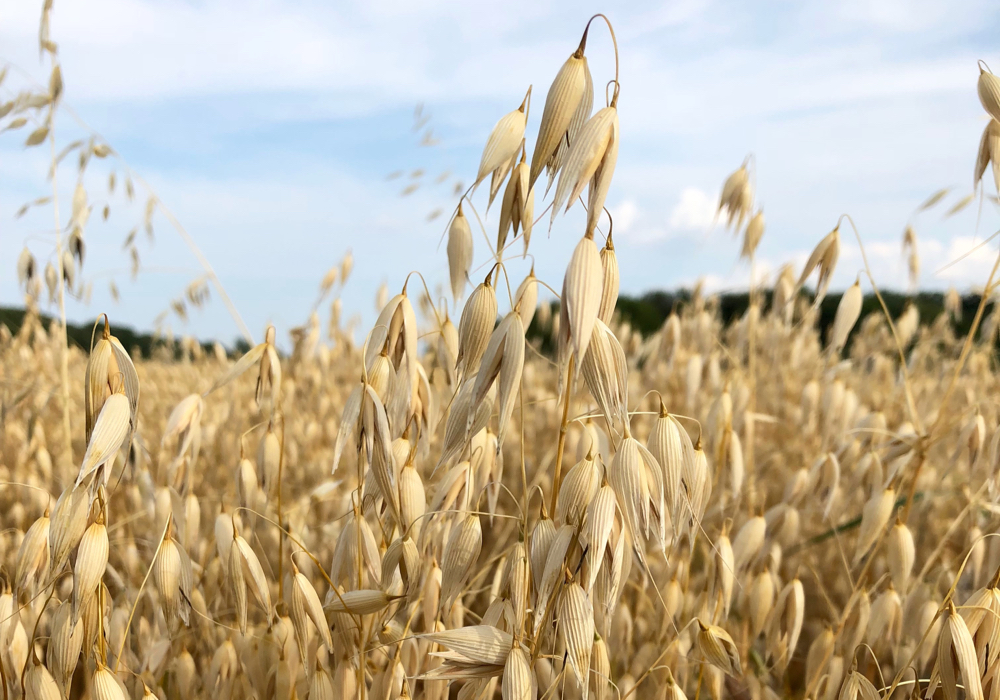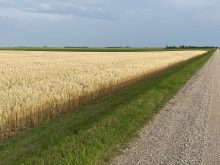Glacier FarmMedia — Oat millers in Canada are telling growers that a plant growth regulator isn’t effective on oats, so farmers probably don’t need to use it.
Grain Millers and Paterson Grain, which operate oat mills in Yorkton and Winnipeg, say chlormequat has limited agronomic value and might disrupt demand for Canadian oats.
Some farmers in Western Canada use chlormequat, sold under the brand Manipulator, to reduce the height of oat plants and minimize the risk of lodging.
Read Also

‘Nothing bullish’ for sliding oats market
Oats futures at the Chicago Board of Trade have trended steadily lower for the past three months, with cash bids in Western Canada seeing a similar trend.
On Feb. 28, Grain Millers sent an email to its oat suppliers, including farmers, asking them to think twice before using Manipulator this year.
“We have seen no agronomic value in the use of Manipulator on oats…. In some cases, it has even been shown to reduce grain yield and quality as well as potentially lengthening maturity,” Grain Millers said.
Lorne Boundy, a merchandiser with Paterson Grain and a farmer in Manitoba, shared a similar message in an interview with The Western Producer.
“It’s efficacy on oats is hit and miss,” Boundy said.
“It works very well on wheat. It works decently on barley. It’s mediocre on oats, at best…. It doesn’t do a lot (for oats).”
A spokesperson for Belchim Crop Protection Canada, which markets and distributes Manipulator, said its efficacy does vary, depending on variety.
“Yes, it is true that there are differences in oat varietal responses to chlormequat. Overall, the product provides a positive benefit when used on oats in terms of helping to maximize yield, preserving quality and improving harvest efficiency,” said Cade Morse.
“Our experience shows that growers use products that provide them with a good return on investment.”
The discussion around the efficacy of Manipulator is connected to a U.S. report on chlormequat, released in mid-February.
An American non-profit, the Environmental Working Group, studied the presence of chlormequat in urine and oat food.
EWG scientists found traces of chlormequat in 77 out of 96 urine samples, or 80 percent of cases.
The urine came from adults in Florida, South Carolina and Missouri.
The high rate of positive tests should raise “alarm bells,” the EWG said, because the “chemical is linked to reproductive and developmental problems in animal studies, suggesting the potential for similar harm to humans.”
The EWG also tested oat-based food that was purchased in May 2023 and the summer of 2022. The researchers tested 25 samples of food made from conventional oats and detected traces of chlormequat 23 times. or 92 percent of samples.
“These findings and chlormequat toxicity data raise concerns about current exposure levels and warrant more expansive toxicity testing, food monitoring and epidemiological studies to assess health effects of chlormequat exposures in humans,” say the authors of the EWG study, published in the Journal of Exposure Science and Environmental Epidemiology
In its report, the EWG says the source of the chlormequat is likely Canadian farms because American growers aren’t allowed to apply the plant growth regulator to cereal crops.
How much chlormequat?
The amount detected in oat foodswas well below the maximum residue level (MRL) for chlormequat.
In conventional oat food purchased in 2022 and 2023, the EWG found:
- A median amount of 114 parts per billion in 2023 and 90 p.p.b .in 2022.
- So, 104 ppb for the 25 samples of oat foods
- The U.S. Environmental Protection Agency has an MRL for chlormequat in oat grains of 40 parts per million and 10 p.p.m. for oat bran.
Put another way, the amount found in oats was 104 p.p.b. and the maximum allowable amount is 40,000 p.p.b. The MRL is 384 times more than the amount detected in oats.
“In my opinion, and POGA’s opinion, is that this is a good news story, if anything,” said Brad Boettger, chair of the Prairie Oat Growers Association and a farmer in Alberta, east of Edmonton.
“The fact that we’re 350 times lower than the maximum allowable, I would characterize it as kind of making a story where there isn’t one.”
Boundy used more direct language.
He described the EWG report as “crap.” However, he acknowledged that public perception of chlormequat in oats “could become an issue.”
The data and evidence may be on the side of Canadian growers, but major media outlets in the United States picked up the EWG study, including CBS News, Forbes, People magazine and USA Today.
“Chemical That May Cause Infertility Found in Cheerios, Quaker Oats … 80% of Americans tested were found to have been exposed to chlormequat,” said an alarming headline from people.com.
If consumers think oats are unsafe because of a Facebook post or something they saw on Instagram, it creates a massive risk for the oat industry.
That’s why Canadian oat growers are being asked, politely, to avoid using Manipulator.
“Grain Millers, Inc. has not prohibited the use of Manipulator on contracted oats but does discourage its use based on the data, the risk of future trade barriers and developing consumer concerns related to this product,” says its email to growers. “It is recommended that growers use careful consideration before using this product.”
Paterson Grain is also taking a subtle approach.
Boundy is encouraging growers to use other tactics to prevent lodging instead of applying chlormequat.
“You shouldn’t be starting your planning … with ‘yes, I’m going to use it (Manipulator),’ ” he said.
“Start with your variety. Pick a good, standing variety, tailor your fertility program to help it stand and go from there.”
—Robert Arnason writes for the Western Producer from Manitoba.















